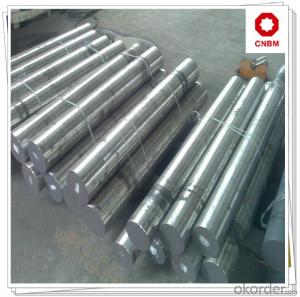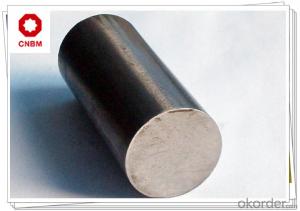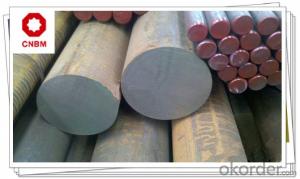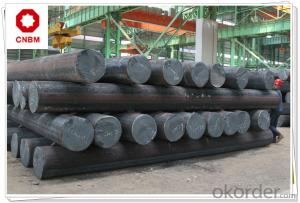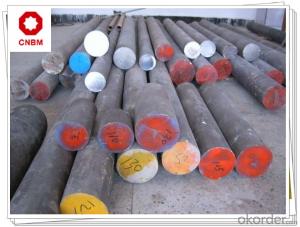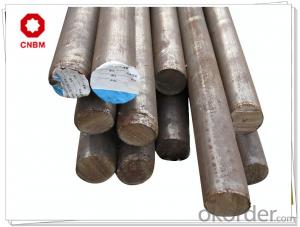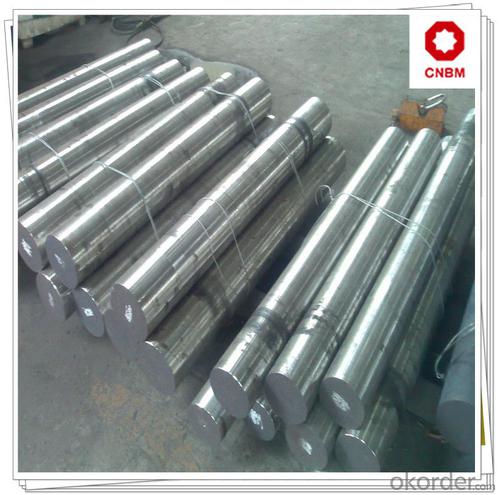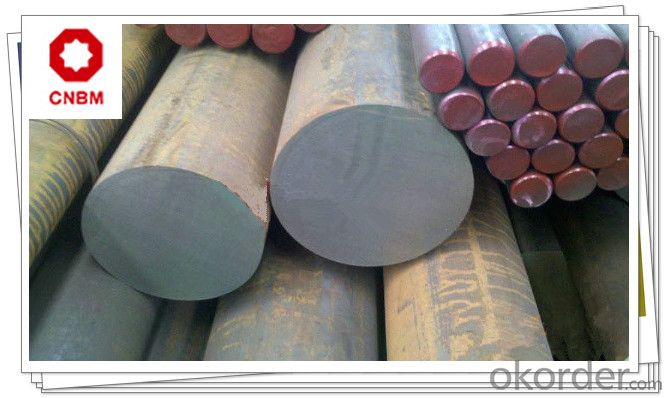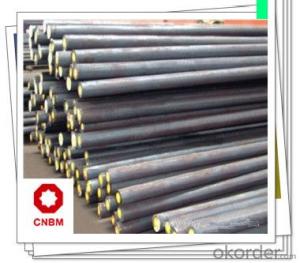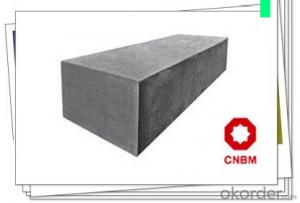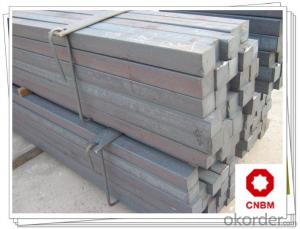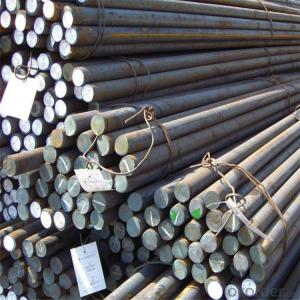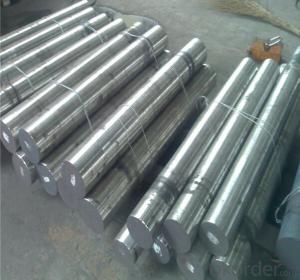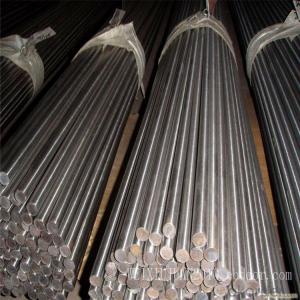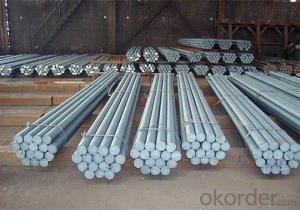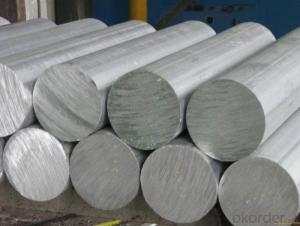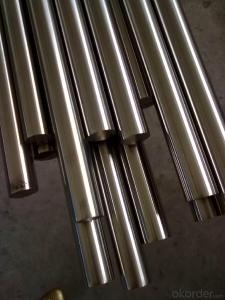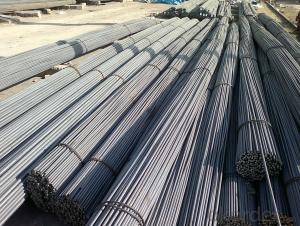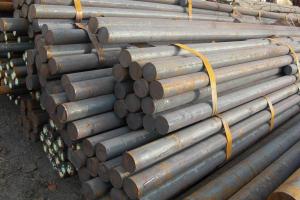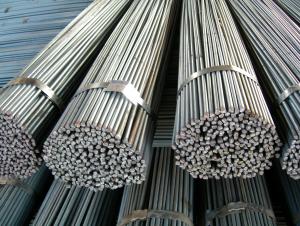Carbon Structural Steel Round Bars SAE1020CR
- Loading Port:
- China main port
- Payment Terms:
- TT OR LC
- Min Order Qty:
- 400 m.t.
- Supply Capability:
- 120000 m.t./month
OKorder Service Pledge
Quality Product, Order Online Tracking, Timely Delivery
OKorder Financial Service
Credit Rating, Credit Services, Credit Purchasing
You Might Also Like
Carbon Structural Steel Round Bars SAE1020CR
PRODUCT USE
1, can be used to produce various types of rivet, bolts and welding structural parts.
2, can be used to produce seamless pipes, mold, steel plate, U-steel and joist steel
PRODUCT MAIN POINTS
1, high quality with competitive price
2, certifictes are available
3, heat treatment specification: tempering, 910 ℃, air cooling
PRODUCT SHOW
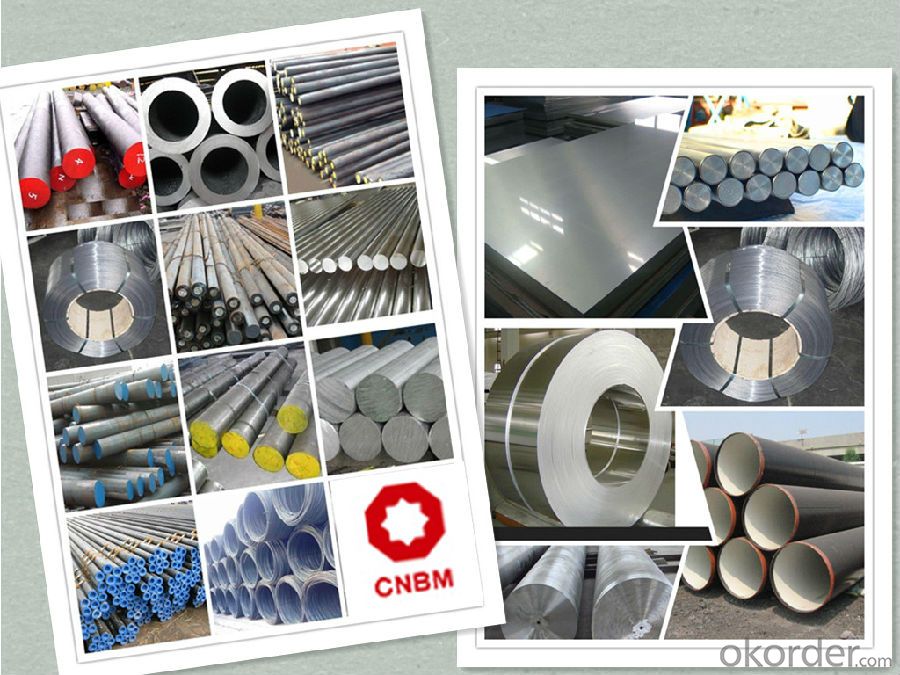
PRODUCT SPECIFICATION
1, Chemical Composition %
| Grade | C | Si | Mn | S | P | Cr | Ni | Cu |
| SAE1020CR | 0.17-0.24 | 0.17-0.37 | 0.35-0.65 | ≤0.035 | ≤0.035 | ≤0.25 | ≤0.25 | ≤0.25 |
2, Mechanical Properties
| Strength of Extension σb | Yield Strength σs | Elogation δ5 | Reduction of Area ψ | Hardness (no heat treatment) |
| ≥410(42) Mpa | ≥245(25) Mpa | ≥25 % | ≥55 % | ≤156HB |
ABOUT US

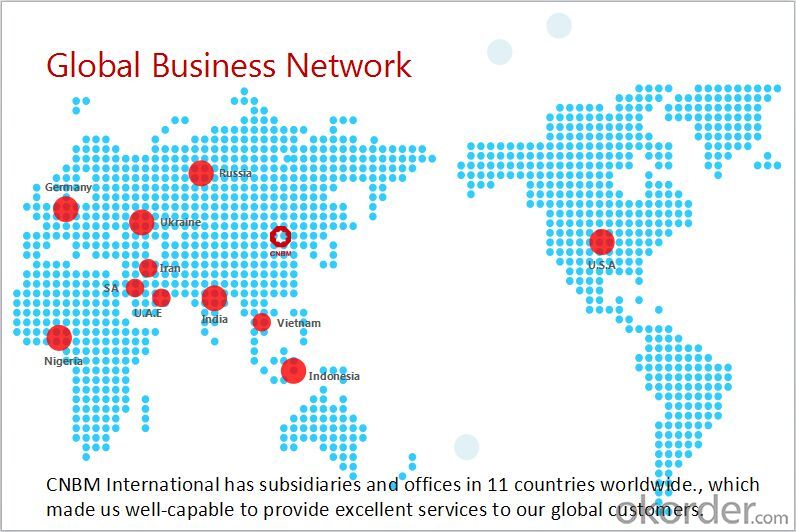
- Q: Are steel round bars used in the construction industry?
- Steel round bars are widely utilized in the construction industry due to their versatility. They find applications in reinforcing concrete structures, providing structural support in buildings, and fabricating components for bridges, highways, and other infrastructure projects. These bars possess remarkable strength and durability, enabling them to endure heavy loads and harsh environmental conditions. Moreover, their uniform shape and smooth surface facilitate easy welding, bending, and machining, rendering them an excellent option for construction endeavors.
- Q: What are the advantages of using steel round bars over other materials?
- Steel round bars have numerous advantages compared to other materials: 1. Strength and durability: Known for their remarkable strength and durability, steel round bars are perfect for a wide range of applications. They can withstand heavy loads and resist deformation, making them ideal for structural purposes. 2. Versatility: Steel round bars offer tremendous versatility due to their various sizes, grades, and finishes. They can be easily customized to meet specific requirements, such as different lengths, diameters, and surface finishes. 3. Cost-effectiveness: Steel round bars provide a cost-effective solution when compared to other materials. They are readily available and affordable, thanks to their abundance and efficient manufacturing processes. Moreover, their high strength-to-weight ratio allows for the use of smaller quantities of steel without compromising strength. 4. Corrosion resistance: Steel round bars can be produced with different finishes, including galvanized or stainless steel, which enhances their resistance to corrosion. This enables them to be suitable for outdoor applications or environments where they may encounter moisture or chemicals. 5. Machinability: Steel round bars are highly regarded for their excellent machinability, allowing for easy cutting, drilling, or shaping according to specific design requirements. This characteristic promotes efficient processing and reduces production costs. 6. Fire resistance: Steel is inherently fire-resistant and does not contribute to the spread of flames. Consequently, steel round bars are the preferred choice in applications where fire safety is a concern, such as construction or industrial settings. 7. Recyclability: Steel is highly recyclable, making steel round bars an environmentally friendly option. They can be easily melted down and reused to create new steel products without compromising their properties or strength. In summary, the advantages of using steel round bars over other materials include their strength, durability, versatility, cost-effectiveness, corrosion resistance, machinability, fire resistance, and recyclability. These factors make steel round bars the preferred choice in various industries, including construction, manufacturing, automotive, and infrastructure projects.
- Q: Can steel round bars be used in the aerospace manufacturing industry?
- Yes, steel round bars can be used in the aerospace manufacturing industry. Steel is a commonly used material in aerospace applications due to its strength, durability, and resistance to high temperatures. Steel round bars are often used in the construction of aircraft frames, landing gears, and engine components.
- Q: Are steel round bars available in different lengths?
- Yes, steel round bars are available in different lengths.
- Q: How do you determine the straightness of a steel round bar?
- To determine the straightness of a steel round bar, you can use a straightedge or a precision measuring instrument such as a dial indicator. Place the straightedge along the length of the bar and observe if there are any visible gaps or deviations from a straight line. Alternatively, by using a dial indicator, you can measure the amount of deflection or deviation from a straight path at different points along the bar's length.
- Q: Can steel round bars be used in the production of sporting goods?
- Yes, steel round bars can be used in the production of sporting goods. Steel is a durable and strong material that can provide stability and support for various sporting equipment such as weights, bars for weightlifting, poles for pole vaulting, or components for bicycles and golf clubs.
- Q: Are steel round bars suitable for the production of valves?
- Yes, steel round bars are suitable for the production of valves. Steel is a commonly used material in valve manufacturing due to its excellent mechanical properties, such as high strength, durability, and resistance to corrosion. Steel round bars can be easily machined and formed into various valve components, providing the necessary strength and stability required for valves to withstand high pressure and temperature conditions. Additionally, steel round bars can be heat-treated to enhance their mechanical properties, further improving the performance and reliability of valves. Overall, steel round bars are a suitable choice for the production of valves, ensuring their functionality and longevity in various industries and applications.
- Q: How is a steel round bar made?
- To create a steel round bar, a series of steps must be taken during the manufacturing process. First, high-quality raw materials, typically steel billets, are carefully chosen. These billets are then heated in a furnace until they reach an appropriate temperature for forging. Once the billet has been heated, it is placed into a forging machine. Here, it undergoes significant pressure, either from repeated hammer strikes or mechanical press application, to shape it into a round bar. The goal of this forging process is to achieve the desired shape and dimensions. Following the forging stage, the round bar enters a heat treatment process. This involves heating the bar to a specific temperature and then rapidly or slowly cooling it. This treatment enhances the bar's mechanical properties, including its strength, hardness, and toughness, making it suitable for various applications. After heat treatment, the bar goes through machining. This step involves cutting, turning, and grinding the bar to achieve the desired dimensions and surface finish. By doing so, the bar meets the required tolerances and specifications. Lastly, the round bar undergoes a final inspection to ensure its quality and adherence to specified standards. This inspection involves checking its dimensions, surface finish, and any other specific requirements, such as chemical composition or mechanical properties. In conclusion, the production of a steel round bar involves carefully selecting raw materials, forging, heat treatment, machining, and final inspection. Each step in this process is essential in guaranteeing the quality and integrity of the end product.
- Q: Can steel round bars be used in the production of springs?
- Certainly! Springs can be produced using steel round bars. Steel is a commonly chosen material for manufacturing springs because it possesses strong attributes and excellent durability. Steel round bars are frequently employed as the foundation material for springs because they can be easily manipulated and formed into the desired spring shape. Moreover, by subjecting steel round bars to heat treatment, their mechanical properties can be improved, rendering them appropriate for a range of spring applications. The selection of steel type relies on the desired characteristics and requirements of the spring, such as the desired level of flexibility and resistance to deformation. In summary, steel round bars are extensively employed in spring production due to their outstanding mechanical properties, making them a suitable option for a variety of spring applications.
- Q: Are steel round bars resistant to impact?
- Yes, steel round bars are generally resistant to impact due to their high strength and durability. They can withstand significant force without deforming or breaking, making them suitable for applications where impact resistance is required.
Send your message to us
Carbon Structural Steel Round Bars SAE1020CR
- Loading Port:
- China main port
- Payment Terms:
- TT OR LC
- Min Order Qty:
- 400 m.t.
- Supply Capability:
- 120000 m.t./month
OKorder Service Pledge
Quality Product, Order Online Tracking, Timely Delivery
OKorder Financial Service
Credit Rating, Credit Services, Credit Purchasing
Similar products
Hot products
Hot Searches
Related keywords
